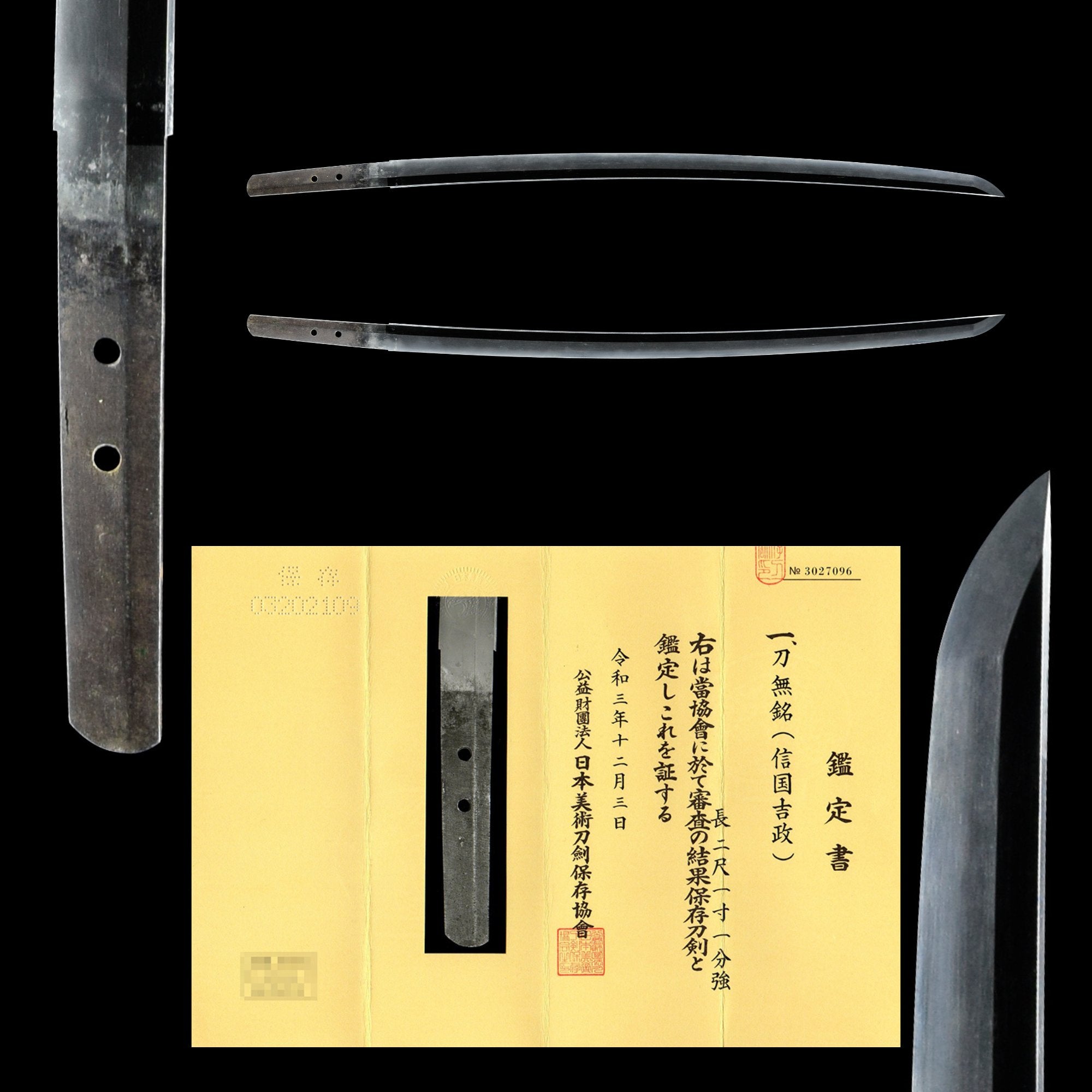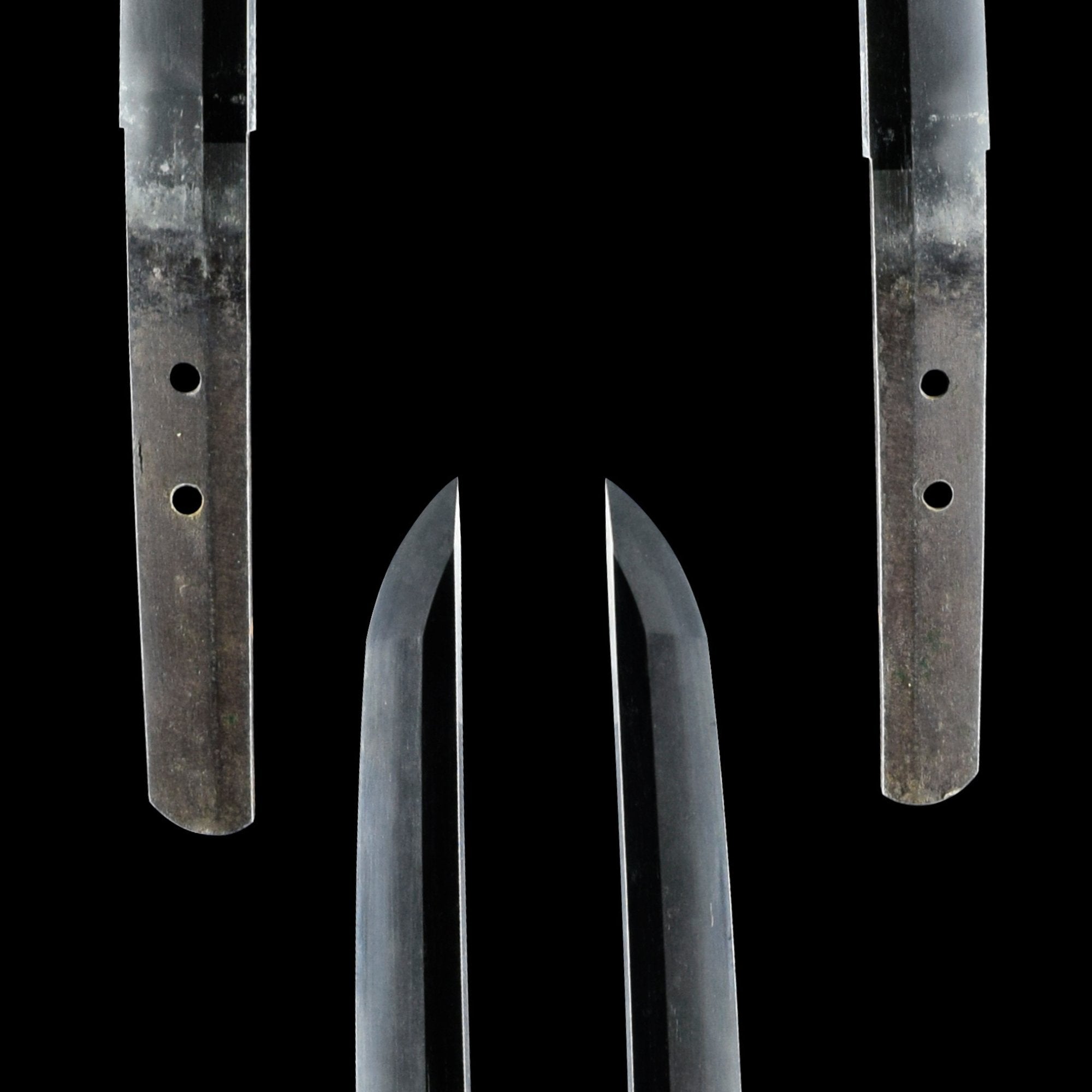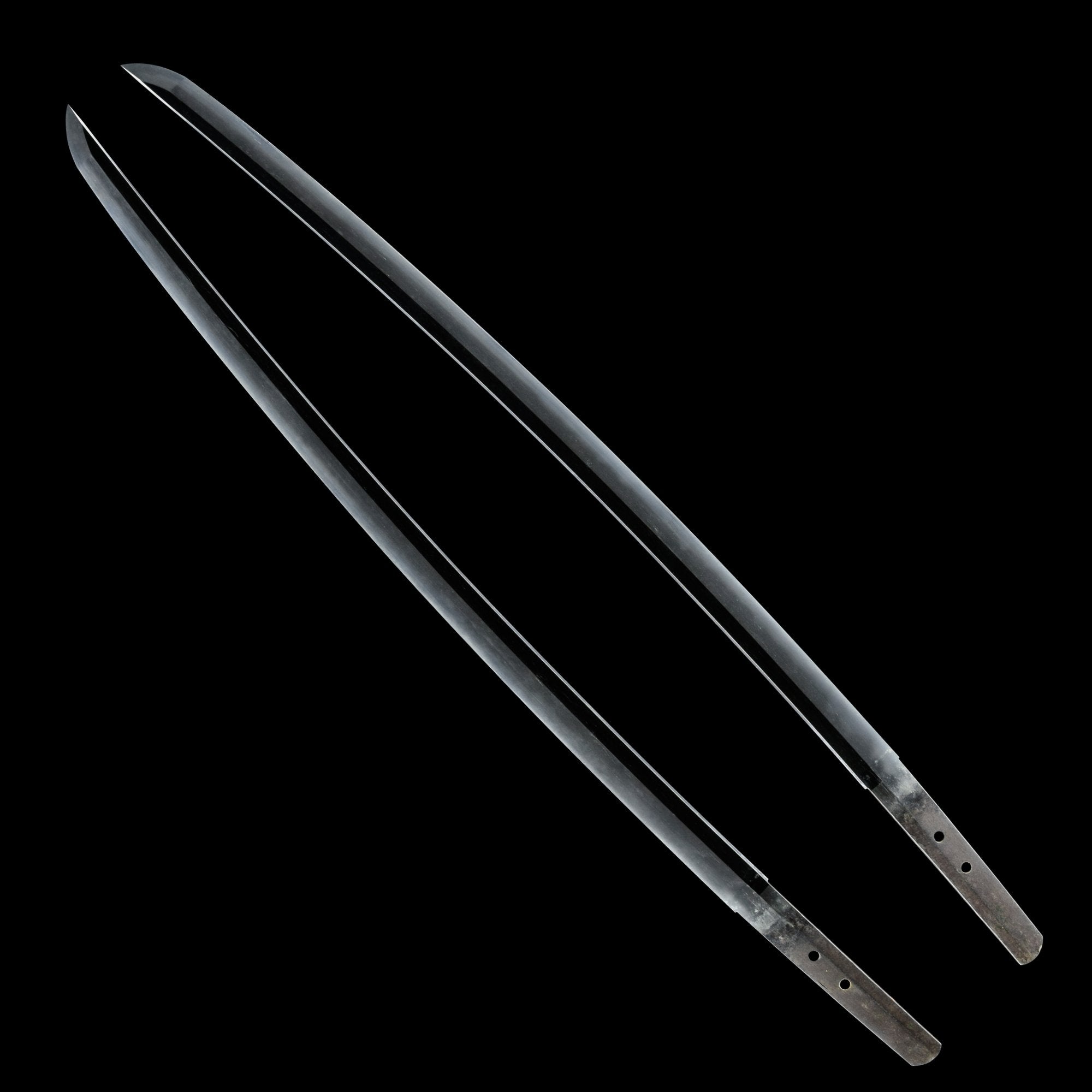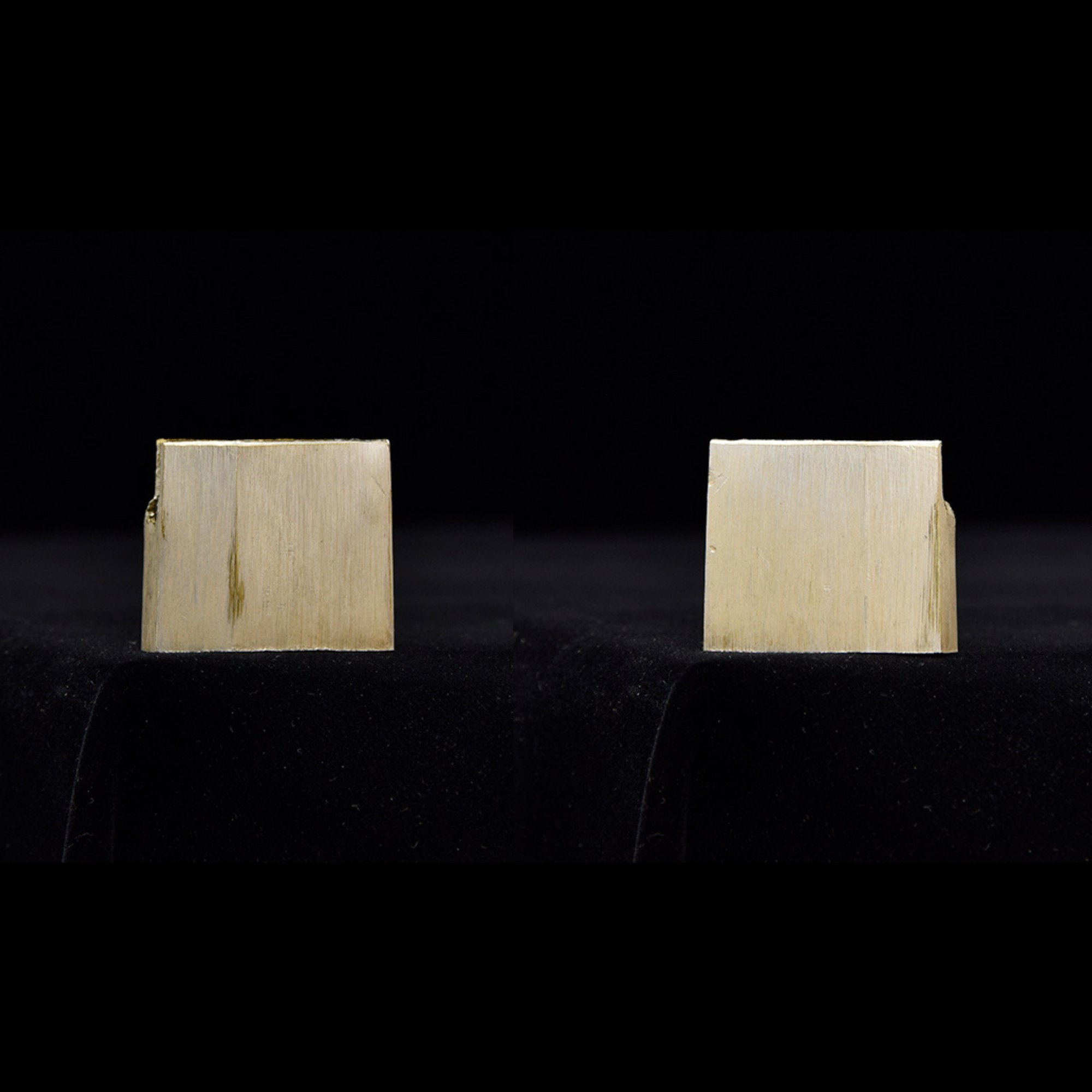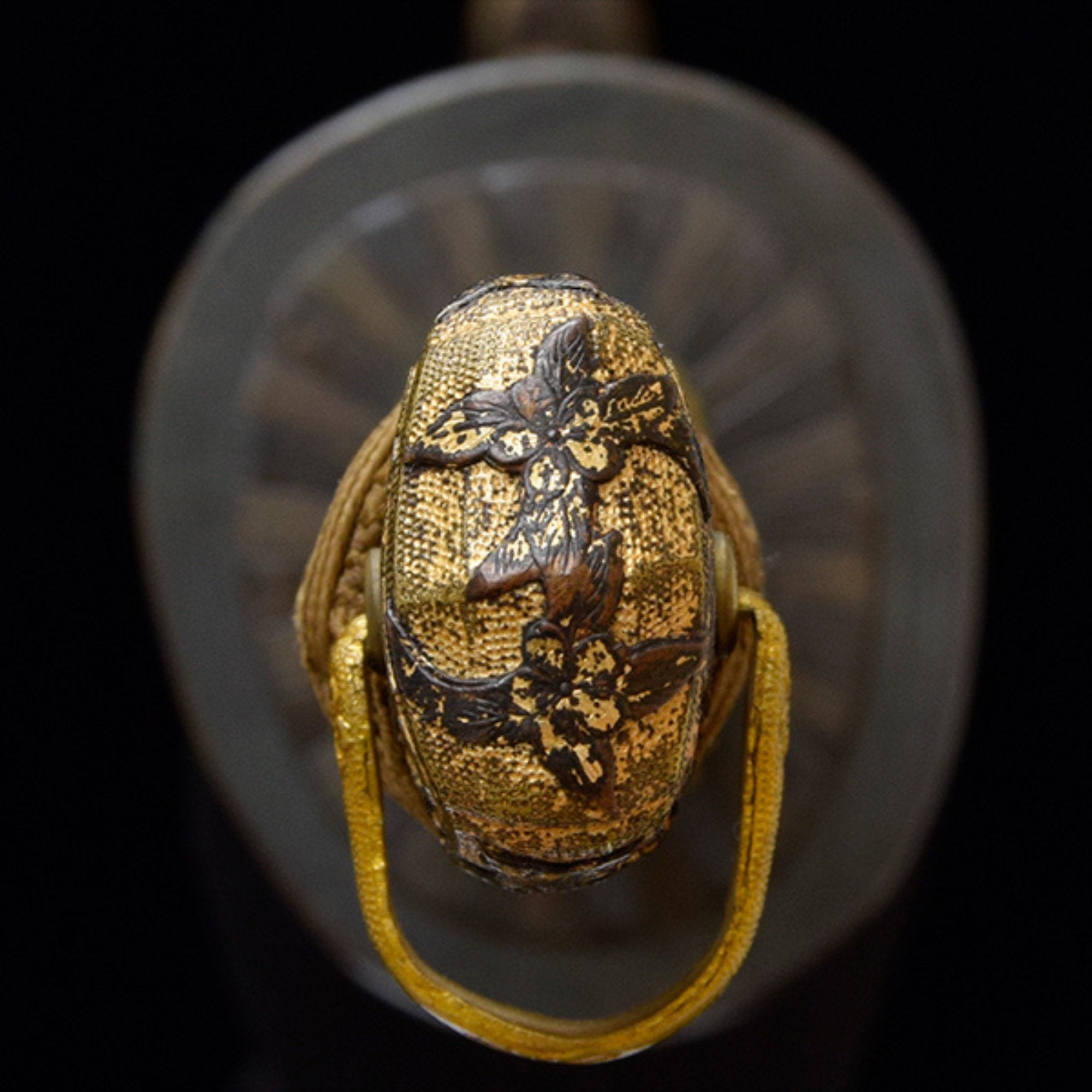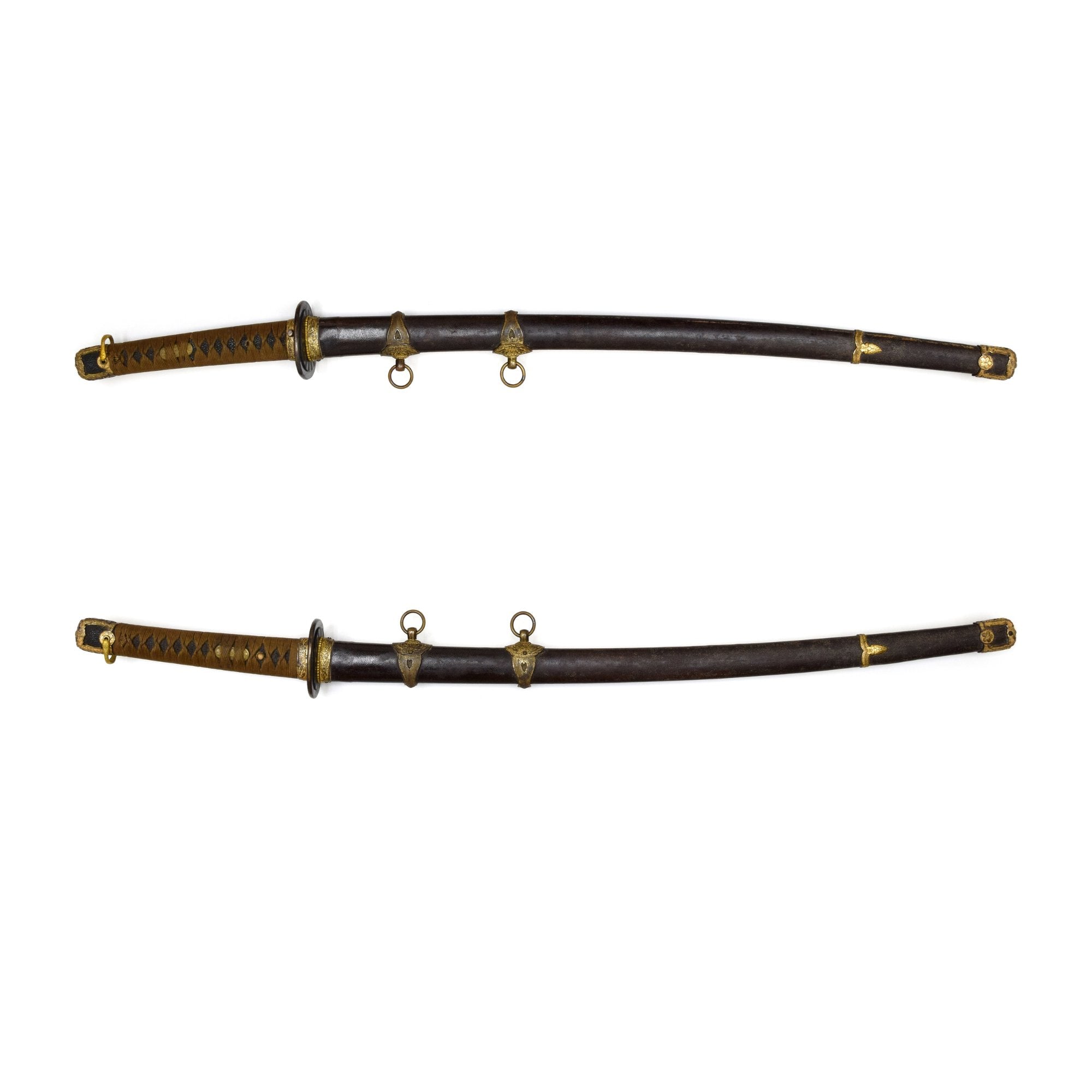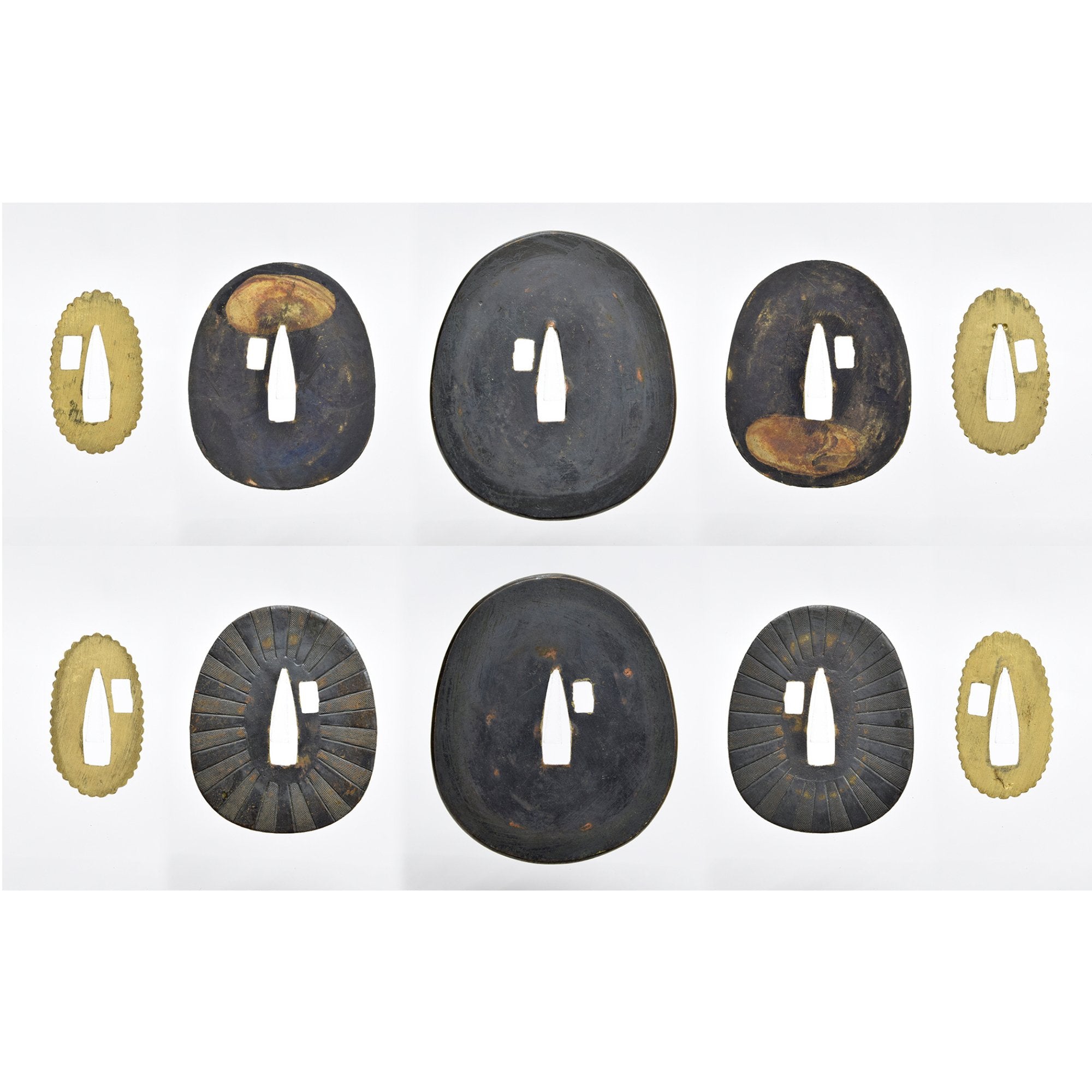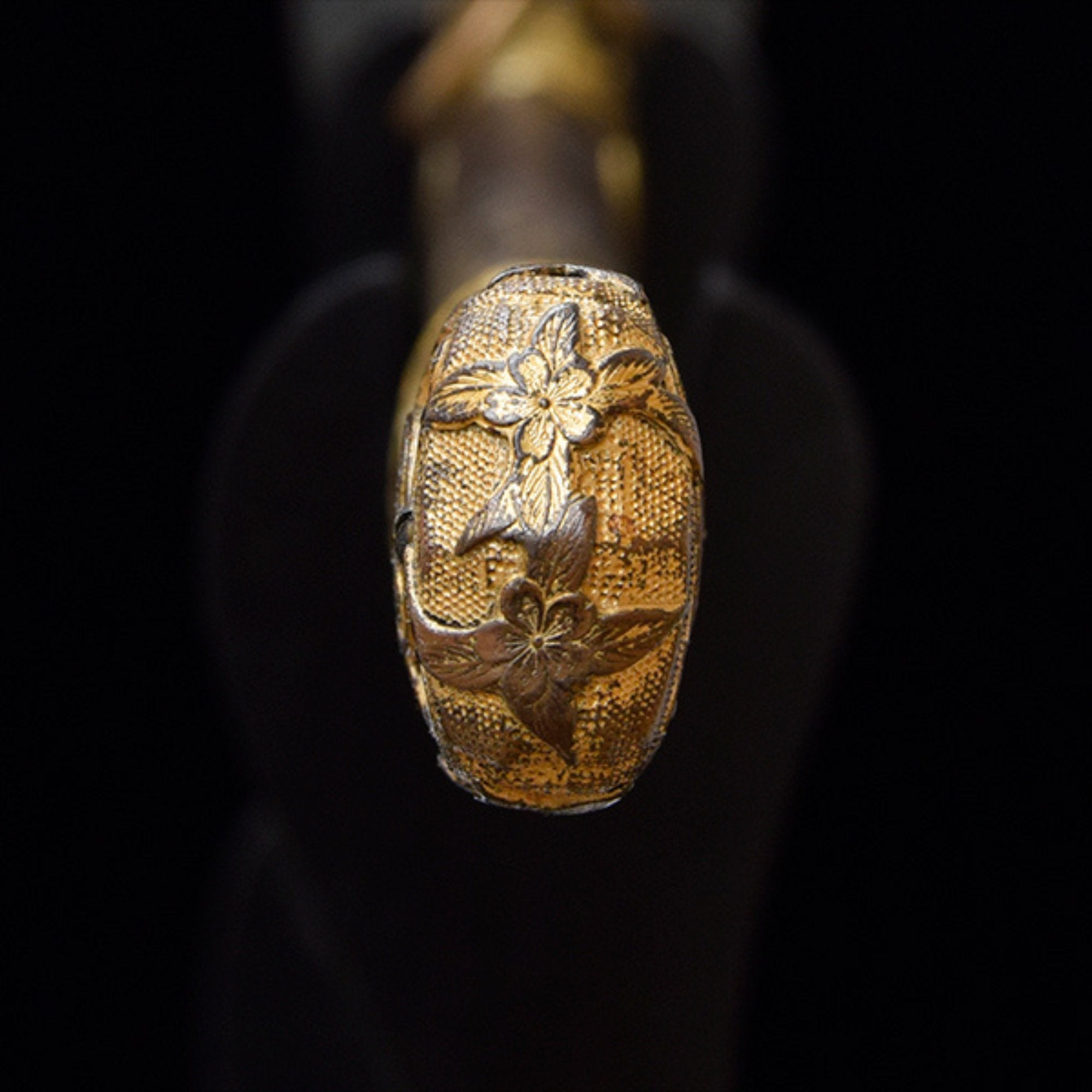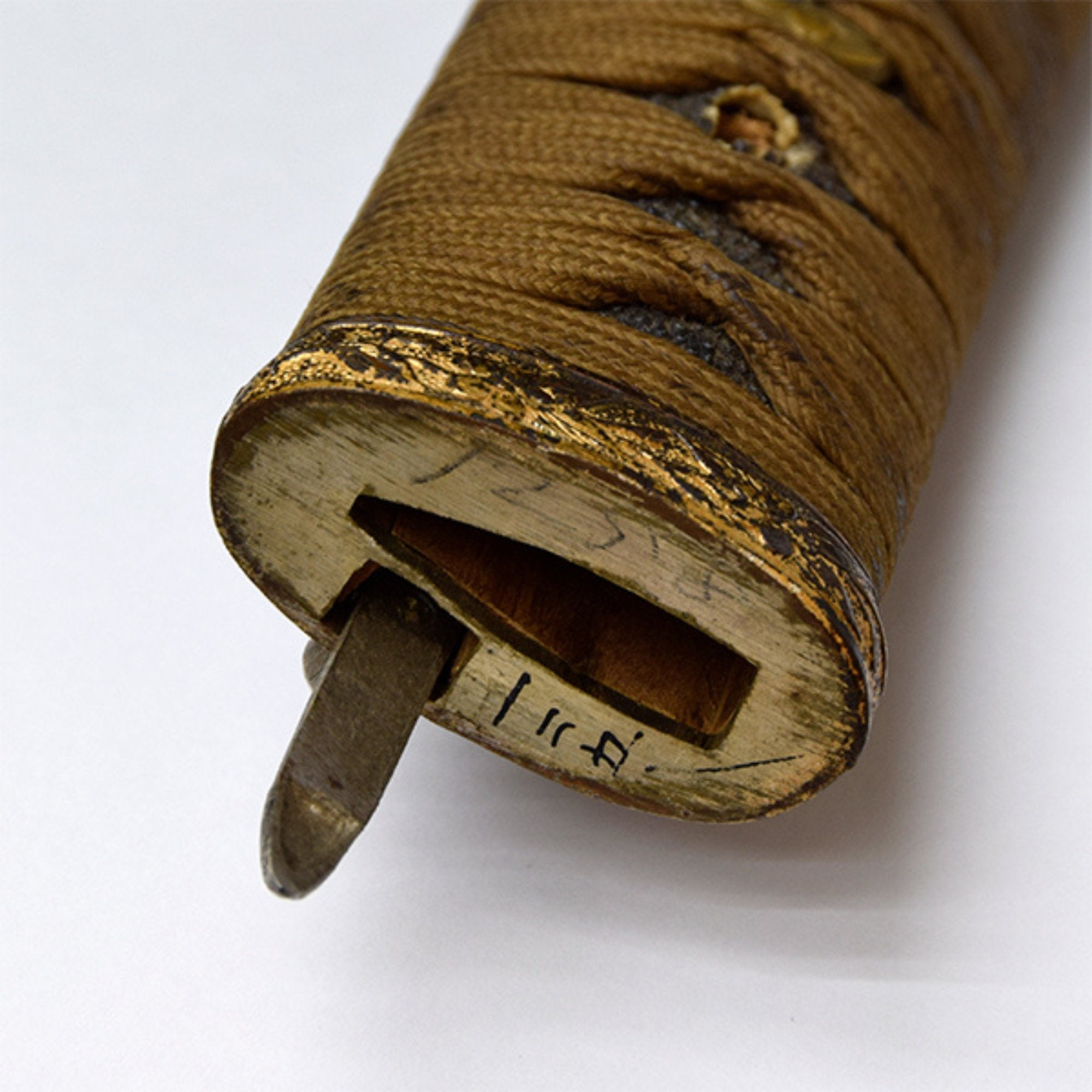Description
Authentic Nihontō Japanese Sword Katana Attributed to Nobukuni Yoshimasa 信國吉政 NBTHK HOZON TOKEN Certificate
The swordsmith 定光 (Sadamitsu), who relocated from the 信國派 (Nobukuni school) in 京 (Kyoto) to 筑紫 (Chikushi) around the Ōei period, later changed his name to 信國 (Nobukuni) after moving to Chikushi. This 信國 (Nobukuni) became the founder of the Chikushi Nobukuni school, which collectively came to be known as 筑紫信國 (Chikushi Nobukuni), leading to the later 新刀 (Shintō) period's 筑前信國 (Chikuzen Nobukuni).
信國吉政 (Nobukuni Yoshimasa) is known to have a first and second generation (occasionally a third generation is also noted). However, this particular work has not been distinguished by generation. The second generation is said to be the younger brother of the first generation, with the surname Shindō, and he also went by 平四郎 (Heishirō), passing away in August of Jōkyō 5 at the age of 67. His style followed the Bizen tradition, similar to the first generation, but his signature is typically thicker. The first generation used the character "作" (saku) in their signature, which is absent in the second generation's signature.
This sword has been significantly shortened and has lost its signature. Its slightly stronger curvature compared to the typical Kanbun Shintō style suggests it could be from the early Kan'ei period of the first generation, or from the later Enpō, Tenna, or Jōkyō periods of the second generation. The tip is slightly elongated, and the steel has a well-forged ko-itame pattern with ji-nie, showing a faint utsuri. The hamon in the lower half features small chōji midare, while the upper half has a similar small gunome chōji, both intricately forged. The blade has frequent ashi, fine sunagashi, and yubashiri, with a bright nioiguchi. The boshi is midare on the omote side, returning rounded, while the ura side has a single gunome before returning. There is a forging flaw on the shinogi-ji near the monouchi on the omote side, but otherwise, it is in good condition and would improve significantly with re-polishing.
The accompanying naval tachi-style koshirae shows signs of long-term use. The gold plating on the fittings is worn, but the sakura leaves on the kabutogane and ishozuki are well-preserved. The handle is a bit loose, which can be easily fixed with shims.
Bare weight: 682 grams.
Weight with koshirae and without saya: 1,095 grams.
Nihontō Information
| Name 名称 | 無銘(信國吉政) - Mumei(Nobukuni Yoshimasa) |
| Blade Length 刀長 | 二尺一寸一分二厘弱 / 64.0 cm |
| Sori 反り | 四分四厘強 / 1.35 cm |
| Blade Width 元幅 | 29.0 mm |
| Blade Thickness 元重 | 7.2 mm |
| Tip Width 先幅 | 物打24.4 mm 横手位置21.0 mm |
| Tip Thickness 先重 | 物打6.0 mm 松葉位置4.8 mm |
| Mekugi-ana 目釘穴 | 2個 |
| Age 時代 | 江戸前期 The early period of Edo era(17th century) |
| Certificate 鑑定書 | 保存刀剣鑑定書(NBTHK HOZON TOKEN Certificate) |
| Registration 登録 | 令和3年6月19日 東京都登録 Registered on June 19, 2021 in Tokyo Prefecture |
| Included 附属 | 真鍮地銀鍍金はばき (Brass Habaki with Silver Plating) |
| 藍鮫研出鞘海軍太刀型軍刀拵 (Navy Tachi-style Mount with Blue Same-kawa Saya) | |



